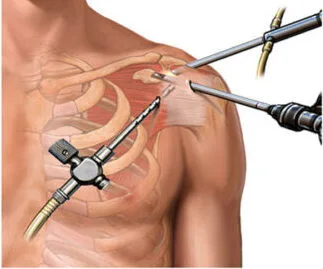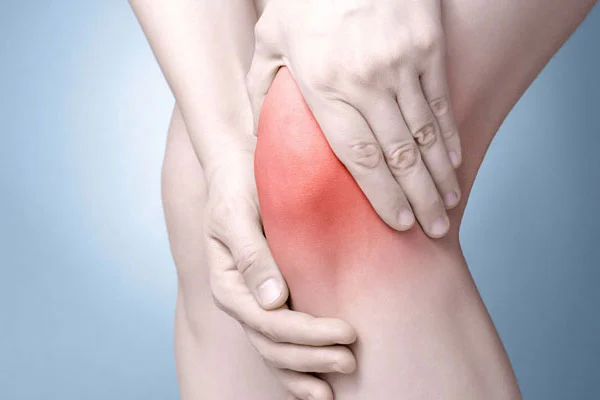Surgical Services
Timetable

Arthroscopy is a safe and minimally invasive method for diagnosing and treating a wide range of knee and shoulder problems. During arthroscopy, the surgeon makes a small incision in the knee or shoulder and inserts a camera called an arthroscope into the joint. The camera displays images of the inside of the knee or shoulder on a video monitor. With the help of these images and using miniature surgical tools, the surgeon investigates the problems of the damaged area.
In arthroscopy, unlike open surgery, due to small incisions, the patient feels less pain after the operation, and recovery and return to daily activities is faster.
In the Dr. Hossein Haji Taghi clinic, the best services in the field of arthroscopy are provided with the most up-to-date tools
Why is arthroscopy done?
One of the most common leg problems is knee pain and one of the hand problems is shoulder pain. Today, people in different age groups face these pains depending on their working conditions and daily activities.
Knee pain is caused by various factors such as heavy work, osteoporosis, joint rheumatism, sports injuries, old age, early menopause, etc. When you go to an orthopedic specialist for treatment, the doctor will prescribe different treatment methods for you after examining and checking the level of pain and knee problems.
The causes of shoulder pain include muscle weakness, damage to shoulder cartilage or bone, poor posture, and injuries such as tendonitis, bursitis, and frozen shoulder.When methods such as exercise therapy, physical therapy, drug therapy and other non-surgical methods do not work, with continued pain and loss of range of motion, swelling or redness at the site of injury, the doctor suggests arthroscopy, which is a safe method. And its recovery period is shorter than surgery

What injuries does arthroscopy treat?
Some of the knee injuries that are treated with arthroscopy are as follows:
- knee bursitis
- meniscus tear
- Deviation and displacement of the patella
- Anterior cruciate ligament tear (ACL tear)
- medial collateral ligament tear (MCL tear)
- Intra-articular fractures of the knee
- Removal of Baker’s cyst due to arthritis
- Inflammation of the synovium
Some of the shoulder injuries that are treated with arthroscopy are as follows:
- Shoulder instability and dislocation
- Rupture or damage to the biceps tendon
- Rotator cuff injury
- Cartilaginous ring (labrum), torn or damaged ligament
- Joint damage caused by rheumatoid arthritis
- Inflammation of the bone around the rotator cuff

Advantages and disadvantages of knee arthroscopy
Advantages
Today, knee arthroscopy is very popular due to its many advantages over other treatment methods. The most common benefits of arthroscopy include the following:
- Superficial and small incisions compared to open surgery
- Not opening the knee joint
- Simplification of surgery
- Reduce movement restrictions
- No infection and bleeding
- Feeling less pain
- Reduced recovery period
Disadvantages
Arthroscopy is very low risk and safe compared to other invasive treatment methods, but this method can also have complications. Some of the possible complications and disadvantages of this method are as follows:
- inflammation
- Stiffness of the knee joint
- infection
- blood clotting
- Pain from bearing weight on the knee

Advantages and disadvantages of shoulder arthroscopy
Advantages
Today, shoulder arthroscopy is more popular than open shoulder surgery because of the small incisions. Other advantages of this method include the following:
- Outpatient surgery
- No need for hospitalization
- Safe and secure surgery
- Short recovery period
- Less bleeding
Disadvantages
Shoulder arthroscopy usually has no side effects due to its safety and low risk, but in some people, the following can rarely be seen:
- Damage to blood vessels or nerves
- Damage to shoulder cartilage
- Failure of surgery
- Inflammation or infection
- Shoulder stiffness
- shoulder weakness
The probability of these complications after arthroscopy is very low, which is almost zero by following the doctor’s instructions and post-operative care

Care after arthroscopy
Most arthroscopies are performed on an outpatient basis and the patient goes home the same day, but some arthroscopies require hospitalization
- After the operation, it is better to have a companion with you because you will feel dizzy and sleepy for up to 24 hours due to the effects of the anesthetic. Do not drink alcohol for 24 hours, and avoid driving until the pain is gone. It is normal to feel muscle pain and sore throat after the operation, but if it persists, talk to your doctor
- For a few days, depending on the type of arthroscopy (knee or shoulder), do not use your shoulder or legs and do not move heavy objects or loads. Take medication under your doctor’s supervision to prevent blood clots and reduce pain
- Keep the surgical site clean. Change your dressing on time and take a shower after consulting your doctor and taking a bath
- In knee arthroscopy, raise your knees and hold for a few seconds to reduce swelling and relieve pain. Do not put your weight on your knees. In the first few days, use canes and walkers to help you walk
- After the recovery period, the doctor may prescribe several physical therapy sessions to strengthen your muscles, flexibility and improve the function of your joints
If you have knee pain that interferes with your life and you want to know if arthroscopy of your knee or shoulder can help or not, contact us at Dr. Hossein Haji Taghi’s office.




بدون دیدگاه